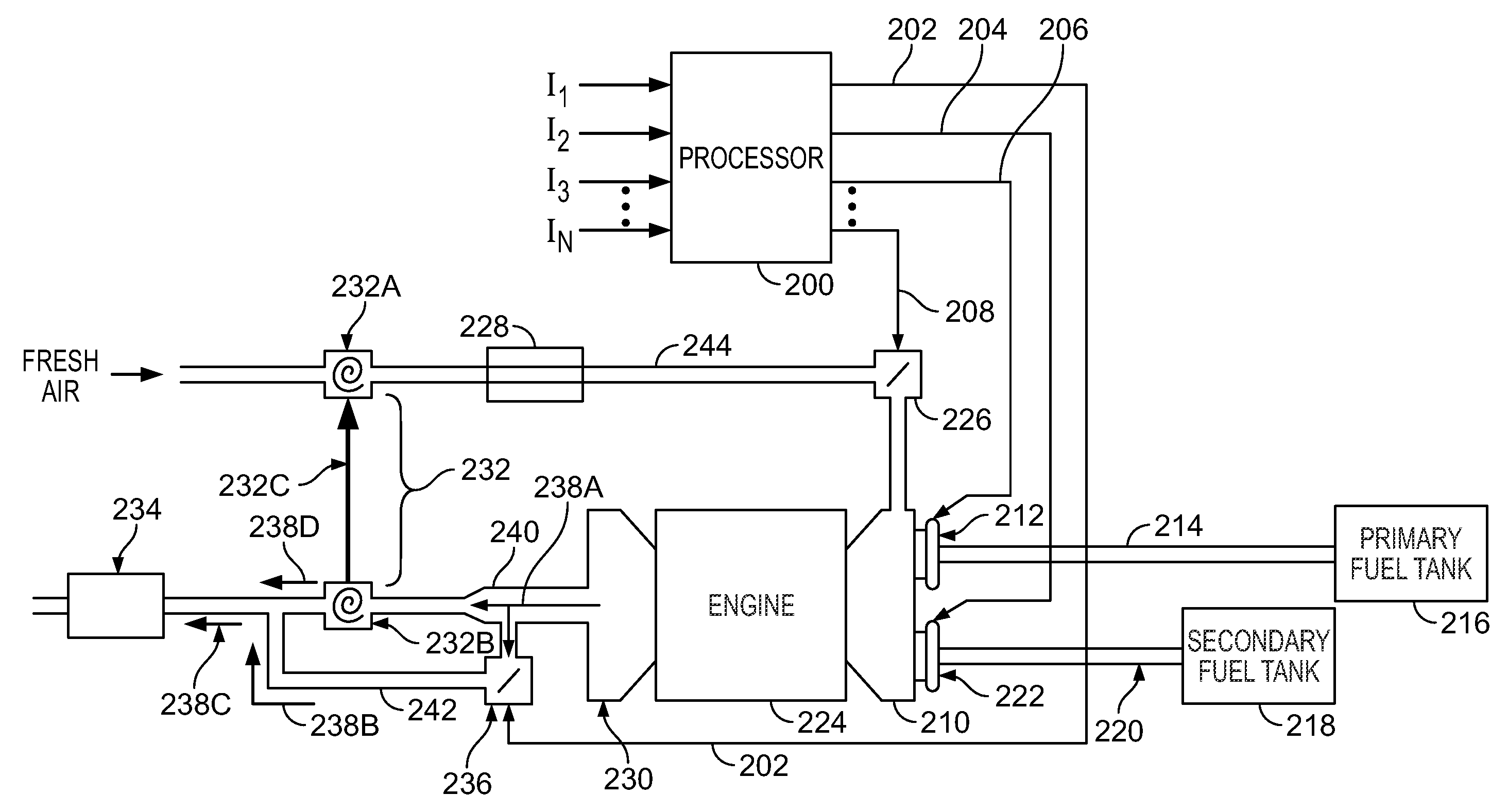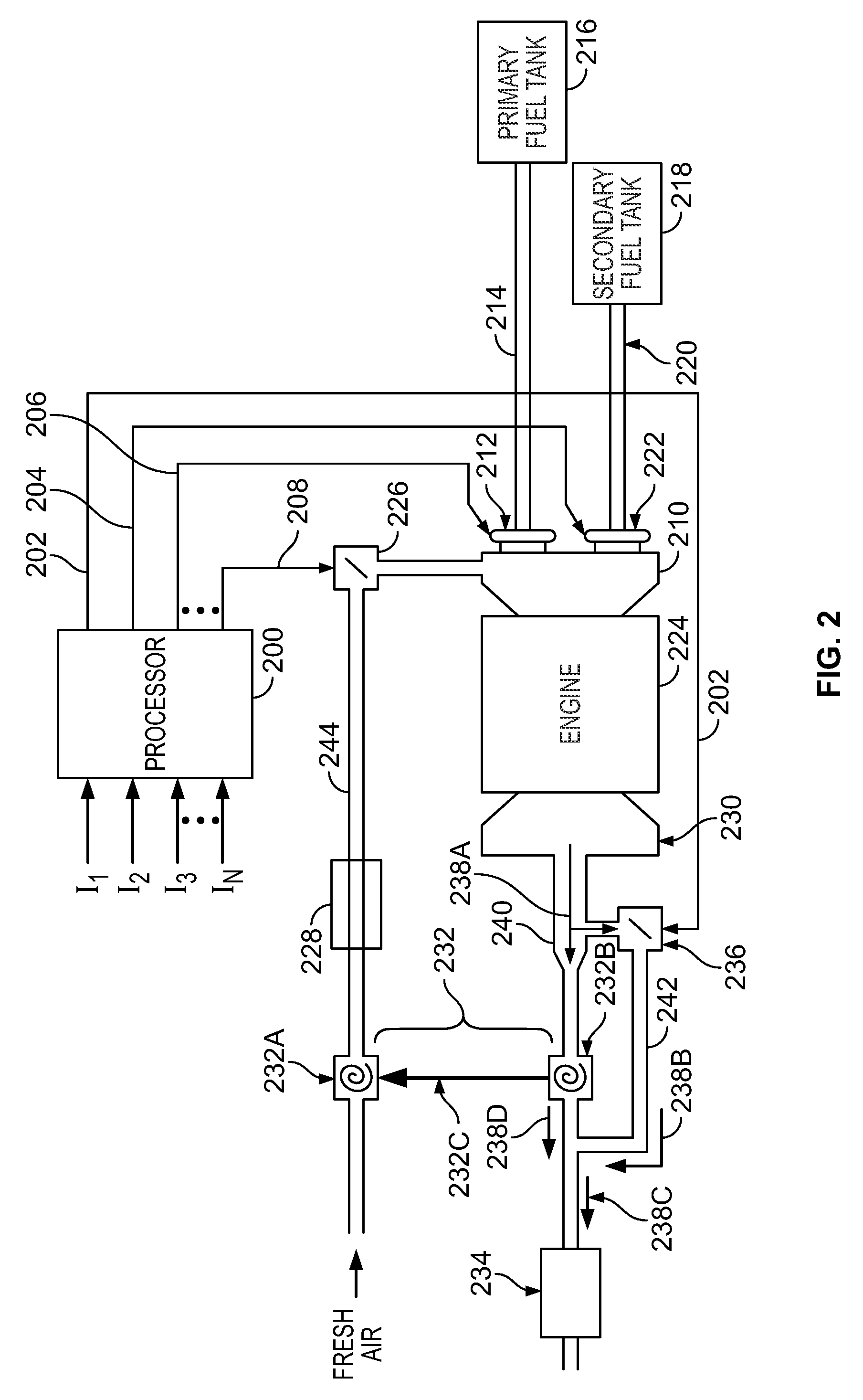Bi-fuel engine with variable air fuel ratio
a technology of air fuel ratio and bi-fuel engine, which is applied in the direction of electrical control, process and machine control, instruments, etc., can solve the problems of high emissions of harmful gases into the environment, and achieve the effects of reducing backfiring tendency, reducing the temperature of air fuel mixture, and reducing backfiring tendency
- Summary
- Abstract
- Description
- Claims
- Application Information
AI Technical Summary
Benefits of technology
Problems solved by technology
Method used
Image
Examples
Embodiment Construction
[0029]The present invention provides a device, system and method for controlling a bi-fuel internal combustion engine. The device comprises a processor and an air pump both coupled to the engine and to each other whereby the processor is able to control the air pump and fuel intake of the engine. The air pump, fuel intake of the engine and engine parameters are controlled by the processor to meet power requirements of the engine, achieve acceptable air fuel ratios and avoid forbidden air fuel ratios during operation of the engine. The air fuel ratios are described in terms of λ.
[0030]Acceptable λ values are those values that are desirable based on one or more defined conditions. For example, when the defined condition is the amount of harmful or undesired exhaust gases generated from the combustion of the primary fuel and air or the combustion of a mix of the primary fuel and secondary fuel and air, or the combustion of the secondary fuel and air, acceptable values are those values ...
PUM
| Property | Measurement | Unit |
|---|---|---|
| pressure | aaaaa | aaaaa |
| operating temperature | aaaaa | aaaaa |
| output power | aaaaa | aaaaa |
Abstract
Description
Claims
Application Information
 Login to View More
Login to View More - R&D
- Intellectual Property
- Life Sciences
- Materials
- Tech Scout
- Unparalleled Data Quality
- Higher Quality Content
- 60% Fewer Hallucinations
Browse by: Latest US Patents, China's latest patents, Technical Efficacy Thesaurus, Application Domain, Technology Topic, Popular Technical Reports.
© 2025 PatSnap. All rights reserved.Legal|Privacy policy|Modern Slavery Act Transparency Statement|Sitemap|About US| Contact US: help@patsnap.com



